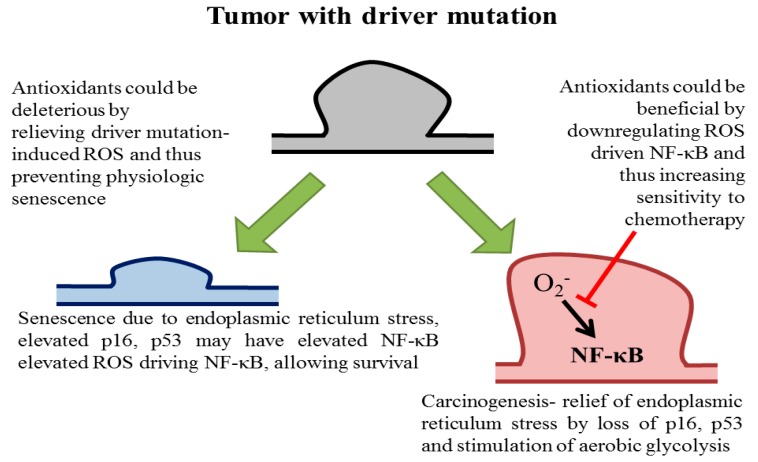Figure 2.
Potential outcomes of antioxidants at differing tumorigenesis stages. The presence of a driver mutation in a primary cell leads to reactive oxygen-mediated endoplasmic reticulum (ER) stress. Normally, this could lead to senescence, in which P16ink4a and FOXO4 senescence markers are elevated, as well as NF-κB activation. This leads to a persistent senescent phenotype which cannot re-enter the cell cycle. On the other hand, ER stress relief with an antioxidant, or tumor suppressor (i.e., p16ink4a) loss leads to clonal cells expansion with driver mutations. This may lead to carcinogenesis. In advanced tumors, NF-κB might be activated by ROS and a ROS blockade may lead to NF-κB activation decrease and chemotherapy and radiation sensitivities increase.

